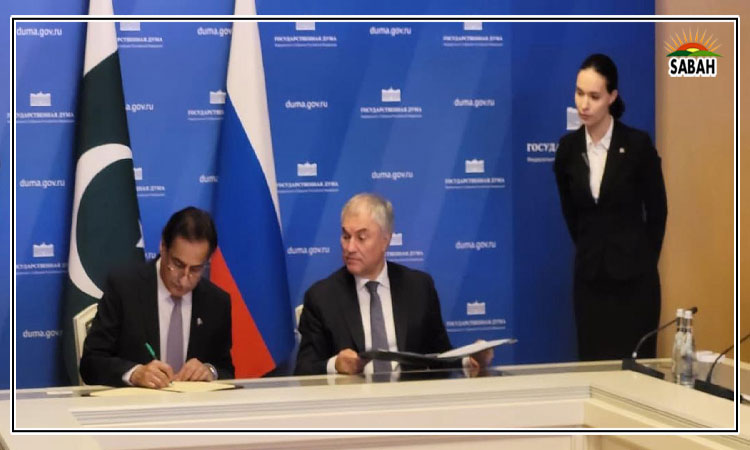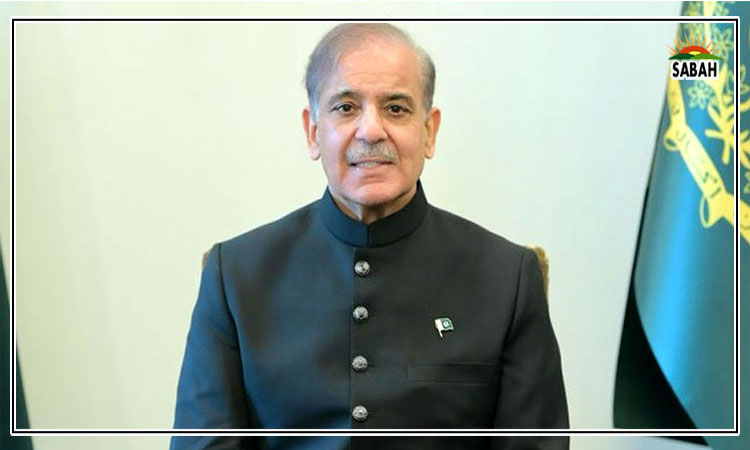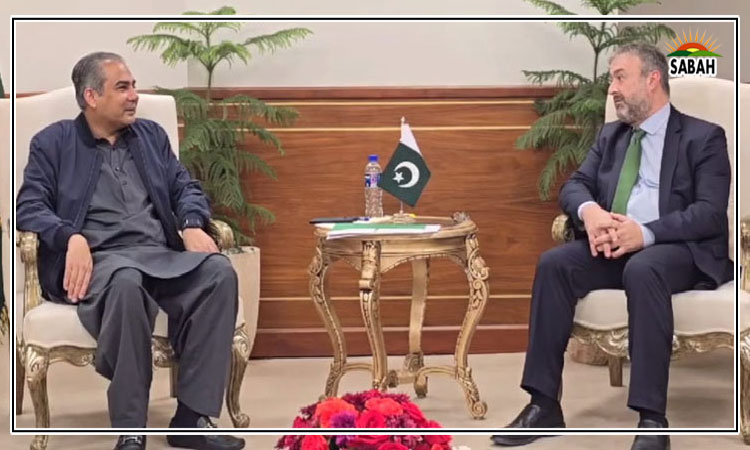What should VCs be worried about?…Dr Ayesha Razzaque
Todays university vice-chancellors (VCs) are facing a number of challenges. The number one challenge by far that universities are grappling with, particularly after the presentation of the 2023-24 federal budget and subsequent tweaks, is financial sustainability and affordability.
Financial sustainability of universities has always been a challenge but the cost of an education at public universities remained within the reach of many Pakistanis. However, lately the contribution of public funds per institution has been drying up. Meanwhile, parliamentarians continue to lobby for the establishment of new universities in the remotest tehsils without consideration to whether they will be able to attract and retain the quality talent needed to staff it.
Public funds are no longer keeping up with the growth in the number of universities. Factor in the rate of inflation over the last few years, and the funding picture for public higher education institutions (HEIs) has turned dire.
Education provided by public HEIs remains heavily subsidized. In 2022-23, public funds subsidized the cost of education at a prestigious public university in Islamabad by approximately 50 per cent. When that funding dries up, universities will have to make up the shortfall immediately, and the quickest and easiest way is by raising tuition fees. Thus, a version of the higher-ed affordability crisis that has been plaguing North America for the last two decades (tuition rates doubled from 2000 to 2019) has come for us in Pakistan.
While accurate figures for annual budget shortfalls of universities are hard to come by, conversations with some VCs put those numbers at around Rs1 billion for large, Rs500 million for medium, and Rs200 million for new/small universities.
Even against this backdrop, most VCs today remain unaware of what their average per-student cost is, much less the per-student cost broken down by departments and programs, and with it, unaware of which programmes/departments are the greatest contributors to expenses.
Once middle-class families were able to cover the cost of public higher education from their running family budget. However, the recent ballooning cost means those same families will have to plan ahead and start saving for their childrens higher education long before they graduate high school.
The college affordability crisis has disproportionately affected students from low-income backgrounds, thus limiting opportunities and perpetuating socio-economic inequality. Those who have the option are forced to take on substantial debt or are deterred from pursuing higher education altogether. All this makes access to higher education a pressing concern, threatening principles of equal opportunity and social mobility central to the mission of public universities.
Many universities up and down the country are already unable to meet their payroll and pension obligations to staff and retirees. Quaid-e-Azam University is reportedly 1-2 years behind paying visiting faculty. Its Management Sciences department alone relies on visiting faculty to deliver about 100 courses every semester. In this environment of simultaneously rising costs and shrinking public support, VCs highest priority is (or ought to be) finding sustainable solutions that ensure both affordability and educational quality, an ongoing and complex task.
So far, those efforts have remained confined to appealing for public funds at the federal and provincial levels and raising tuition fees but this will no longer suffice. Given that there is nothing new under the sun, let us once again look at common approaches taken by universities elsewhere in the world when faced with similar pressures.
In the long term, following in the footsteps of their peers abroad, universities need to develop their own endowment funds managed by professionals diversified portfolios of investments that generate profits that can be deployed to meet operating expenses and subsidize education for those who have a need in the form of scholarships and financial aid.
For example, according to 2021 figures, at $53 billion, Harvard University maintains the largest endowment of all US universities, followed by Yale ($43 billion), Stanford ($38 billion), and Princeton ($37 billion). The average of the 10 largest endowment funds is $28 billion. My own alma mater, a public university, maintains an endowment of $4 billion, the 12th largest of public universities in North America, and publishes its performance (https: //givingto. msu.edu /endowments/performance.cfm) for all to see. The earned returns allow universities to ride out rough periods in the economy. Unfortunately, very few universities in Pakistan today have endowments (IBA went as far as sharing the size of its endowment fund: Rs2.2 billion) or are moving in the direction of establishing one.
University endowments are fueled in large part by alumni donations in addition to reinvested returns, grants, and philanthropic donations. The first is requisite on having an alumni network, tracking, and maintaining connections, and that alumni had a positive student experience that motivates them to stay connected with their alma mater. All of that requires a dedicated student and alumni affairs office.
Attracting and soliciting philanthropic donations is an important and almost routine task of university presidents and heads of constituent schools and colleges. Some VCs consider it beneath their dignity to fundraise in this manner, but the fact is that the ability to fundraise is an important consideration when universities fill leadership positions.
In the medium term, universities are simultaneously trying to create new lines of revenue while meeting the demand for education outside of traditional multi-year residential degree programs. Micro-credentials and MOOCs (Massive Open Online Courses) are one avenue universities have been exploring since the arrival of MOOC providers like Coursera, edX, and others like them. Certificates earned from individual courses can be stacked to earn more substantial certificates, called specializations.
For another, online degree programmes, now available through those same MOOC providers, take this further and allow students to earn (mostly masters) degrees from world-renowned universities. A handful of local universities are now trying to get on the MOOC bandwagon with the unique selling point of offering programs in local language(s). As for online degree programs by local universities, those will require regulatory changes for such programmes to receive accreditation which presently does not seem to be forthcoming.
Challenge number two is concretely demonstrating the rate of return or (if that term irks you in an educational context) the impact educational programs have on their students lives. What are the employment statistics of successful graduates from their programs six months and one year after graduation? What are their average salaries after six months, two years and five years? Some universities share a raft of numbers, but they are often irrelevant to stakeholders. Other typical KPIs of direct relevance to students include graduation rate, dropout rate, acceptance rate, etc. While some of these are easy to report, t
he most important ones require tracking students for years after they graduate.
In order to evaluate the rate of return on investment in education, students will consider the above KPIs together with the cost of attendance of programmes. The tuition fee of a four-year undergraduate programme at UET Taxila is Rs400,000, at NUST it is Rs1 million, at LUMS Rs6.3 million and a five-year MBBS at Aga Khan University costs Rs12.7 million. All produce graduates with good employment prospects but their costs vary widely. Prospective students will want to weigh their prospective chances and level of success against the cost that education comes at.
In 2021-22, the Kamyab Jawan program solicited applications for 240 different certifications and short programmes, most of them 3-6 months in duration, targeting non-degree holders / high school graduates and dropouts. The call received 400,000 applications from 279,000 unique applicants. Shockingly, however, 106,198 applicants (38 percent) held a bachelors, masters or doctoral degree. This is what the worth of degrees from many universities has been reduced to.
Lately, there has been some talk by the Ministry of Federal Education and Professional Training about linking public funding for universities to key performance indicators (KPIs) they must report. In the past, often requested data from universities has centered on research publications and funding. Separately, the Higher Education Commissions (HEC) QA Agency has developed a set of expectation and outcome indicators but those are process-oriented and do not address students interests. None of the KPIs in use are relevant to students in BA/BSc and MA/MSc programs that together make up the bulk of university populations.
Prospective VCs and the people appointing them need to appreciate what their primary challenges and responsibilities will be. The job of the VC is not to flex their publication muscle or involve themselves in every minor administrative decision. If it was not before, their job now has become to raise the resources and support the university needs to function. It is to be transparent about what level of success students graduating from their universities can expect to achieve, allowing each to perform a cost-benefit calculus according to their own goals and circumstances.
Courtesy The News












